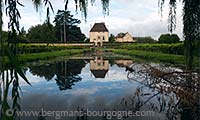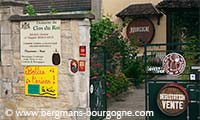
inot noir and chardonnay is the dynamic duo that has made Burgundy a top name in the wine world; pinot noir for the red wines and chardonnay for the white.
But while chardonnay can be found throughout the world, producing wines in a large variety of styles, there are few places suited for pinot noir. Both for pinot noir and for chardonnay Burgundy is the blueprint.

There are many theories on when these grape varieties first appeared in Burgundy. Pinot noir was first mentioned in print in the late 14th century, but some say that it was around already in Gallo-Roman times. The history of chardonnay is even less well-documented. There is a village down in Macon called Chardonnay. There may be a connection here, but evidence is yet to be found.
In Savigny-lès-Beaune, Pernand-Vergelesses and Hautes-Côtes de Beaune there is some pinot gris, locally known as pinot beurot, planted among the chardonnay vines. It is mainly used in a blend with chardonnay.
If pinot noir and chardonnay are the stars of the region, gamay and aligoté are the workhorses. Gamay is the main grape variety for both red Bourgogne Grand Ordinaire (up to 100 percent) and Bourgogne Passe-Tout-Grains (max 2/3). A good Bourgogne Aligoté is a lovely aperitif and mixed with Créme de Cassis you get a Kir.
Up in the Yonne there are a few more grape varieties allowed. César is used together with pinot noir for Irancy and there is also the tressot. For the white wines you also find melon de Bourgogne and sacy. There is even some sauvignon blanc for the Saint-Bris wines.
© 2013 Ola Bergman













